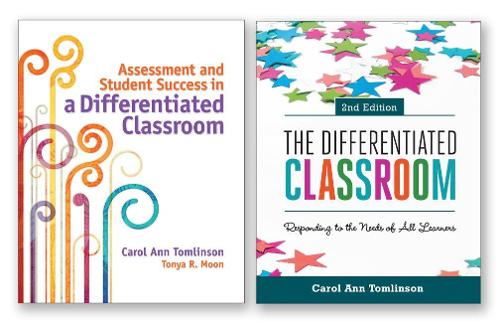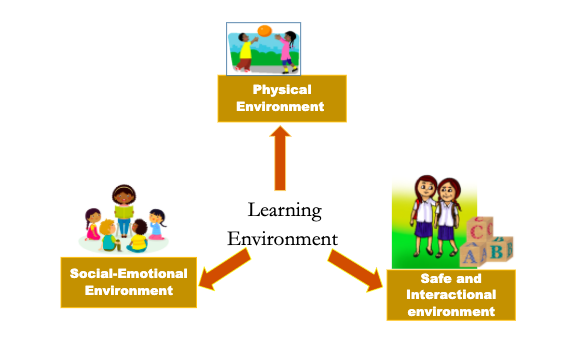Differentiated learning and ICT
Differentiatef Learning and ICT
Introduction
• Differentiated learning : meeting the needs of all learners
• It is based on the philosophy that teachers should adapt instruction
according to student difference
• A process of teaching that assume that there will be differences in the
ü Abilities
ü Interests
ü And learning styles of student
• differences are expected respected and celebrated.
• It is blend of
- Teacher directed teacher selected activities
- Lerner center learner selected activities
- Whole class instruction
- Small group instruction ‘
- Individual instruction
- Instead of everyone getting or doing exactly same thing
Everyone gets or does what the need to grow and succeed
Differentiation is not
1. Hard vs easy 2. Incompatible with standards
3. One size fits all
- Carol
Ann Tomlinson is known as the guru of differentiation
- Author
of 17 books on differentiated instruction and curriculum
- Differentiation
learning is a learning approach whereby teacher adjust their curriculum
and instruction to maximize the learning of all level students
- To
access learning
- Motivation
to learn
- Efficiency of learning
of differentiated learning
1. clear about what
matters in subject matters
2. Assessment and instruction are inseparable
3. Flexibility
4. Readiness
5. Differentiate the process, not the content or product
Elements of Differentiation
• Content—the knowledge and skills students need
to master
• Process—the
activities students use to master the content
• Product—the
method students use to demonstrate learning
• learning environment physical, safe and interactional, social0
emotional
Content
• Content
means the knowledge, understanding, and skill that need to learn
• Learning
goal is same for all student
• To
address individual student needs teachers also provide appropriate scaffolding
when working with content – by teaching prerequisite content to some students,
allowing advanced students to move ahead of the class or even changing the
range for some students based on their individualized education programs
(Tomlison and Imbeau, 2010)
• what
the student needs to learn or how does the student get access to the information
process
• Activities in which the student engages in
order to make sense of the content
• Almost
all students will need to work at a different speed, with different kinds of support,
in different grouping and in a different mode
product
• authentic
assessment: ground for differentiation
• ways
for students to demonstrate what they have come to know, understand and be able
to do after an extended period of learning
Learning environment
• The
way the classroom works and feels.
• Emotions
and feelings on learning.
• (
Some the students can’t learn in noisy environments and can’t work ) for an extended period of time)
How can teachers DIfferentiate
|
Readiness |
Interest |
Learning Profile |
|
Attitude toward school, subject, or topic Experience with topic or an aspect of it Knowledge, understanding, and skills in topic
prerequisites or related topics Misunderstandings about topic or discipline Overgeneralizations about the topic or discipline Sophisticated use of related vocabulary Evidence of skills in the discipline Insightful connections between the current topic and
other topics in the discipline or in other disciplines. General communication, thinking, reasoning and other
pertinent skills |
Passions Hobbies Family interests or pursuits Affiliations—after-school clubs, extracurricular
activities TV viewing preferences Vacation destinations Music preferences Choice of friends Elective choices |
Learning styles: visual, auditory, kinesthetic,
whole-to-part versus part-to-whole, concrete versus abstract, sequential
versus random, etc. Intelligence preferences Environmental preferences: temperature, light,
availability of food and drink, presence or absence of background music, etc.
Gender- or culture-based preferences: competition versus
collaboration, emphasis on the individual versus group Group orientation: work alone or with others, focus on
peers versus focus on adults |
• ICT
aids differentiation by providing students with opportunities to:
• Work
on challenges appropriate to their abilities;
• Take
a more active role in their own learning;
• Try
out things without fear of being humiliated in front of their peers;
• Follow
a flexible route towards the learning goals and;
• Maximize
their independence as learners.
|
Content |
process |
product |
|
Web Quests |
PowerPoint for presentations, book reports, language experience, etc |
Rubrics http://rubistar.4teachers.org |
|
e-pals www.epals.com |
Practice Vocabulary words by typing (words art is fun and makes cool flashcards) Visual images of vocabulary http://www.scrapblog.com |
Digital pictures for artifacts |
|
www.funbrain.com |
www.graphic.org/goindex.html |
Word Processors for spell checking |
|
Advantage |
Disadvantage |
|
Student-Centered |
Time Consuming & Resource Intensive |
|
Strives for Equity |
Often Leads to Dumbing Down the Content |
|
This increasingly Possible with Tech & AI |
Students need to learn in all Different Ways |
|
Acknowledges Difference |
Cannot be Done for Every Student |
|
Gives Students Choice |
Unrealistic in Context of Standardized Tests |
|
Increases Engagement |
Learning Styles are Unproven |
Differentiated instruction is a process that exists in the planning, execution and assessment levels of being a teacher. It is a complex instructional strategy that requires a lot of considerations and is meant to accommodate all types of learners in the classroom so that students are highly successful in their class. I believe it works because it is inclusive to all students and gives each individual a chance to learn and actually succeed.










Comments
Post a Comment